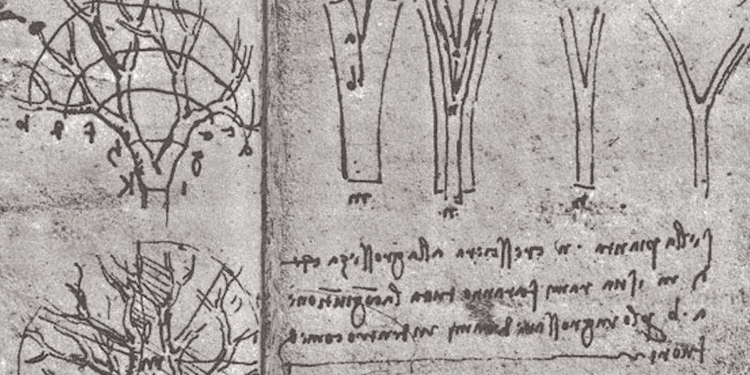For centuries, Leonardo da Vinci’s “rule of trees” has served as a beacon for artists and scientists alike. But recent research has unveiled some contradictions, challenging what we thought we knew about the inner workings of trees.
Leonardo da Vinci, revered for his artistry, had a knack for observing the world around him. His keen interest in capturing accurate depictions of trees led him to formulate the “rule of trees.” This principle suggests that the combined thickness of a tree’s branches at any height matches the tree’s trunk’s thickness.
For a long time, scientists believed that this rule not only applied to the exterior of trees but also to their vascular channels. These are the pathways that ferry water through the tree. As branches taper, so too, it was thought, did the size of these channels, yet their total volume would equal that of the trunk. This concept was woven into the fabric of the metabolic scaling theory.
Challenging the Established Norm
However, scientists from Bangor University and the Swedish University of Agricultural Sciences (SLU) have presented a contrasting view. Their findings, featured in the Proceedings of the National Academy of Sciences, highlight that this model doesn’t hold true for a tree’s internal vascular structures.
Trees need an efficient system to transport water and nutrients from roots to leaf-tips. Key to this process is the hydraulic resistance of the vascular system. Both Ruben Valbuena and Stuart Sopp, representing Bangor University and SLU, argue that da Vinci’s rule falls short when considering this resistance. The tree needs to adjust its vascular channel sizes, especially as they reach the tree’s extremities, to ensure efficient water transport. This means a greater capillary ratio in relation to the surrounding plant mass.
Expert Insights on the Findings
Dr. Ruben Valbuena clarifies that while da Vinci’s rule is invaluable for artists, it doesn’t resonate at the tree’s micro-level. He adds, “Our new insights offer a refined perspective on metabolic scaling theory. It enhances our grasp of plant systems, perhaps shedding light on why larger trees face higher drought risks and potential climate change vulnerabilities.”
Stuart Sopp, an environmental science Ph.D. candidate at Bangor University, expressed the broader implications of their research: “We aim to develop a ratio for estimating tree biomass and carbon in forests. This can revolutionize how we compute trees’ role in global carbon capture.”
PLEASE READ: Have something to add? Visit Curiosmos on Facebook. Join the discussion in our mobile Telegram group. Also, follow us on Google News. Interesting in history, mysteries, and more? Visit Ancient Library’s Telegram group and become part of an exclusive group.











